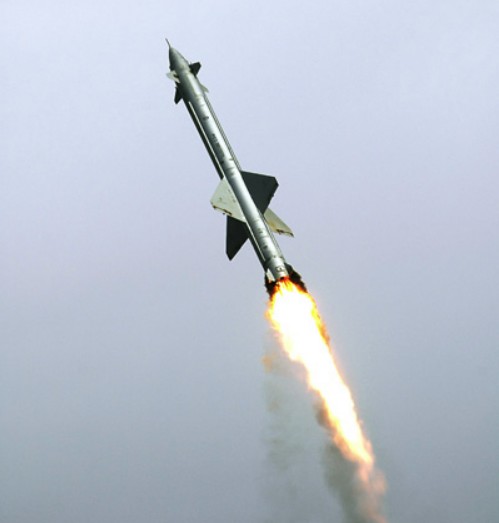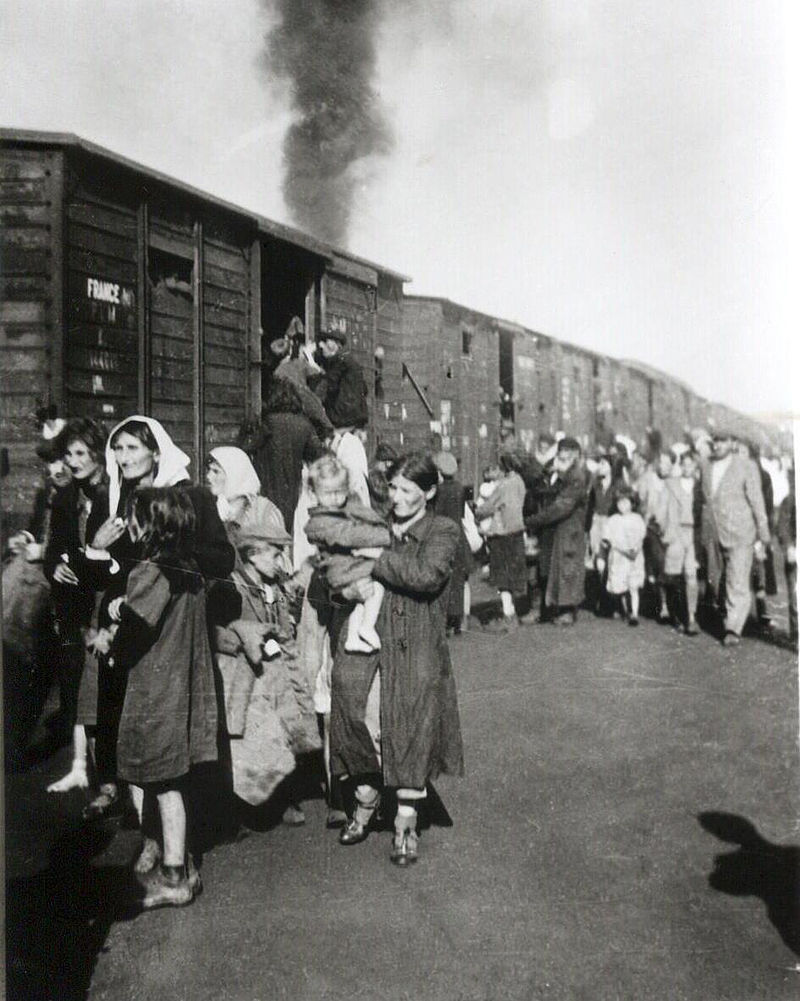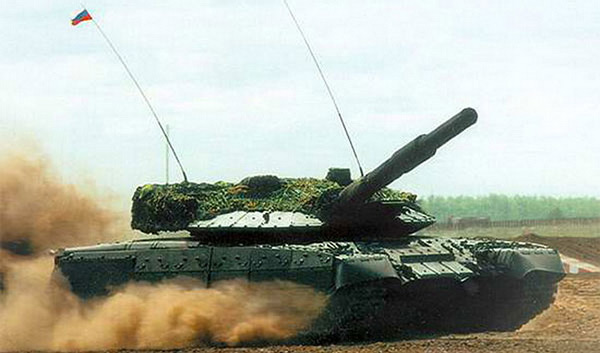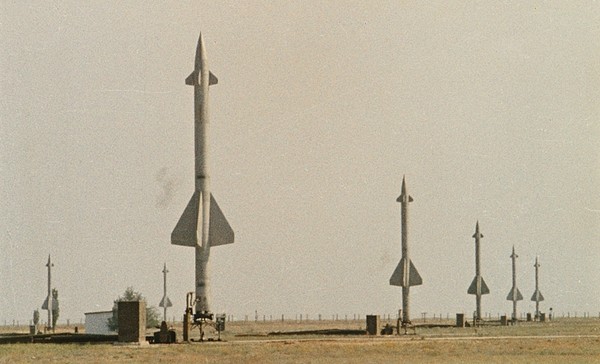
C-25 “Berkut”. In the late 40's and early 50's the Soviet Union began to implement one of the most complex and expensive programs at the initial stage of the "cold war", which is second only to nuclear weapons program. In the context of the threat posed by strategic bomber forces of the USA and the UK and. AT. Stalin ordered the creation of a missile defense system, controlled by a radar network, to reflect the potential of massive air attacks on Moscow. During the Moscow system 1955 g. followed by a second program, which had the aim of protecting Leningrad.
25 C-SAM “Berkut” – video
After the Second World War, the Soviet Union embarked on a program of military use of captured German technology. Particular interest was shown in the radar technology and antiaircraft missiles. After a preliminary study of many types of German rockets, it was decided to stop rocket type «Schmetterling» and «Wasserfall». missiles were developed based on their 88-NII specialists F-101 and F-105. which testing began in 1948 g. However, both types of missiles showed insufficient combat effectiveness, and the Soviet program was characterized by the same problems, that Germany: excessive focus on design and insufficient rocket, attention to more critical technological problems, associated with the radar system and the control system (guidance). At the same time other Soviet KB, reinforced by German engineers, We explore key technologies. In particular, in the NII-885 (g. Monino, Moscow region) It was developed semi-active radar seeker for the anti-aircraft missiles, which it was used for illumination purposes SCR-584 radar, prepared according to "lend-lease".
In August 1950 g. the task of developing the Moscow air defense system. based on the anti-aircraft missiles, He was assigned to the Moscow SB-1. Chief designer of the system were appointed. Beria (son J1. Beria) - known in the country and Radio operator P. Kuksenko, previously repressed. The system was named "Golden Eagle" (the initial letters of the names of the developers).
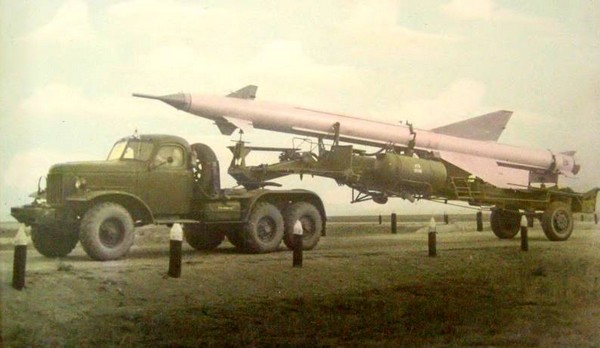
Strategic air defense system S-25 "Berkut" (SA-1 «Guild» US / NATO classification) intended for the defense of Moscow from the air raids, which could involve up to 1000 bombers. In accordance with the tactical and technical requirements needed to develop a control center, which ensures targeting of missiles 20 bombers, fly at speeds of up to 1200 km / h at ranges up to 35 km and at altitudes of 3 to 25 km. Work on the system "Berkut" were distributed among several special KB. OKB-301, heading off. Lavochkin, the development of the associated missile B-300 has been assigned (factory index "205"). It is widely used German technology, but it differs from the previous system P-101.
B-300 was a single-stage rocket, formed on the aerodynamic configuration "duck": air rudders placed in the nose of the housing in two mutually perpendicular planes of the two front wings, mounted in the same plane on the middle part of the body. Cylindrical housing diameter 650 mm is divided into 7 compartments. Caudal installed four-chamber LRE SH9-29 with pressure feed system, of thrust 9000 kg. The special farm in the rear housing fastened gas rudders. The starting mass of the rocket – 3500 kg. Start ZUR produced vertically from a special starting stola.RLS B-200 provide support as targets, and missiles, and issue commands to the rocket. Antenna systems B-200 radar scans space in azimuth and elevation planes. Radar measured the three coordinates, necessary for the formation of a missile control commands. The missile was equipped with a proximity fuse, which responds in the end phase of interception, the system was not able to undermine the team. High-explosive warhead E-600 was to hit enemy plane with the distance to 75m.
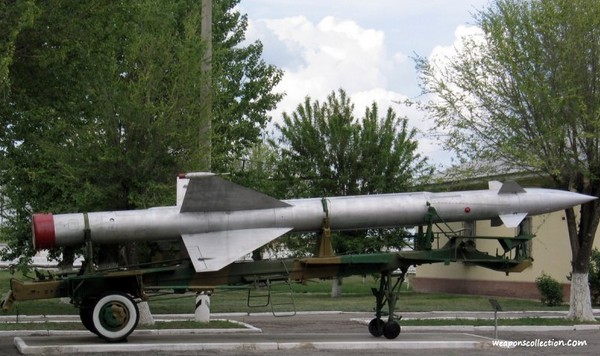
The test missile launches B-300 started in June 1951 city, t. it is. less than a year after the start of the program. During the year, at Kapustin Yar missile test site was launched about 50 these rockets. The initial launches were related mainly to the aerodynamics and component testing, because the radar B-200 has not been delivered at the Kapustin Yar until the end 1952 g. System Tests in the Whole to begin in May 1953 city, when the Tu-4 was shot down by a missile B-300 at the height of 7 km. Select the type of goal was not accidental, Tu-4 was a copy of the American B-29, dropped atomic “bombs on Hiroshima and Nagasaki. Specifying serial missiles samples were tested in 1954 city, including simultaneous interception 20 goals. And after the death of. AT. Stalin's leadership "Berkut" program have been significant changes. SB-1 was derived from the jurisdiction of the KGB, Beria was arrested, FROM. Beria was removed from work, and SB-1 renamed to KB-1 Department of Agricultural Engineering. Chief Designer NI I-108 A. Raspletin was transferred to CB-1 and led the program "Berkut", which was renamed the program the C-25.
Under the name of S-25 "Berkut" system was put into service and started its mass production and deployment. The most costly element of the system were starting position and the necessary road network. It was decided to create two rings around Moscow missile regiments: one ring at a distance of 85-90 km from the center for applying final blow against bomber, and the other - at a distance of 45-50 km to destroy bombers, break through first ring. In order to provide access to the starting positions of two ring roads were built. According to US intelligence estimates, the construction of these roads and starting positions in the years 1953-1955. Annual production of concrete has been spent.
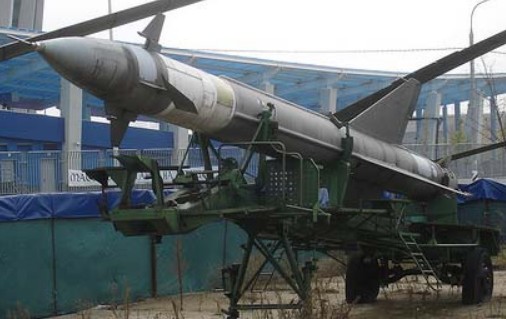
Construction began in the summer 1953 g. and ended at 1958 g. The inner ring has been deployed 22 anti-aircraft regiment, and externally - 34, t. it is. Total 56 regiments. Each launcher position consisted of four functional sections zones: starting, radar, administrative and housing, technology and energy substation. On starting a territory area zone 140 ha was the development of a network of access roads and 60 launchers. Approximately 1,5 km in the bunker housed a command post, covering an area of about 20 it. On the territory of destination is the B-200 radar, comprising azimuth radar altimeter and. In the bunker main BESM was deployed and 20 control stations. Each regiment had a total of about 30 officers and 450 ordinary. At each site there were three missiles- nuclear warhead, having TNT equivalent of about 20 CT. Such a missile could destroy all targets, located in a radius of 1 km from the point of detonation and should have been applied in the case of massive attacks with nuclear weapons carriers.
position configuration allows the regiment to strike 20 targets simultaneously. Apparently, the first stage of each regiment could bombard 20 goals 20 B-300 missiles. After firing system improvements could be carried out by three missiles at a single target, which greatly increased the chances of failure. In addition to starting positions 56 regiments were built six defense zones along the inner ring road. Position C-25 system supports a large number of the country's air defense system radar, which provides early warning and initial information on the objectives. Especially surveillance radar A-100 was designed for these purposes SRI-224. but it could be used and other early warning radar. Deploying the C-25 system has coincided with a significant increase in air defense radar network, in particular, in the period 1950-1955,. production of radar quadrupled.
Two rings of S-25 “Berkut” radius around Moscow 50 and 90 km.
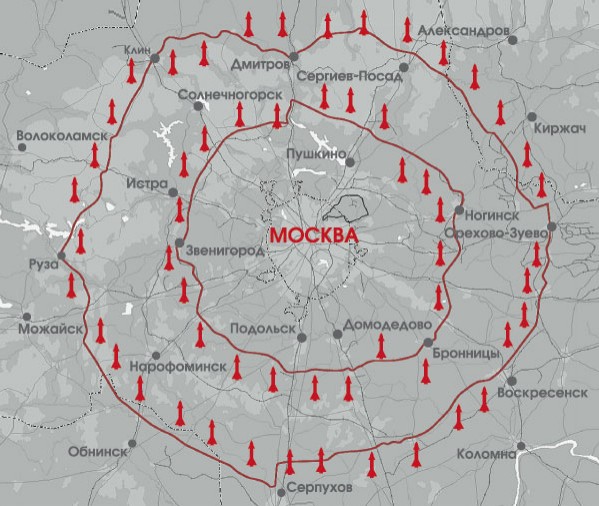
Serial production of S-25 "Berkut" began in 1954 g. TO 1959 g. It was produced only about 32 thousands of rockets B-300. This 20 times the scale of construction of ballistic missiles in the same period. The first SAM-300 openly demonstrated at the parade 7 November 1960 g. System C-25 scale and construction time was roughly comparable to the US Nike-Ajax system. In the US produced 16 thousands of rockets and deployed 40 divisions, in USSR - 32 and deployed thousands 56 regiments. The first Nike-Ajax Systems Division was deployed near Washington in December 1953 city, a little earlier, than in the Moscow Air Defense District. Large scale production system and the deployment of C-25 in the USSR partly explained by a simple guidance system, providing one interception targets three missiles to achieve an acceptable level of destruction. Technical parameters of both systems were similar, the range of the actual incidence was 40-45 km. However, B-300 rocket was three times heavier than the US, partly because of greater mass warheads, but mainly - due to the use of less efficient single-stage design as opposed to the two-Nike-Ajax missile system. In both cases, these systems were rapidly replaced by more complex: Nike-Hercules in the United States and C-75 "Dvina" in the USSR.
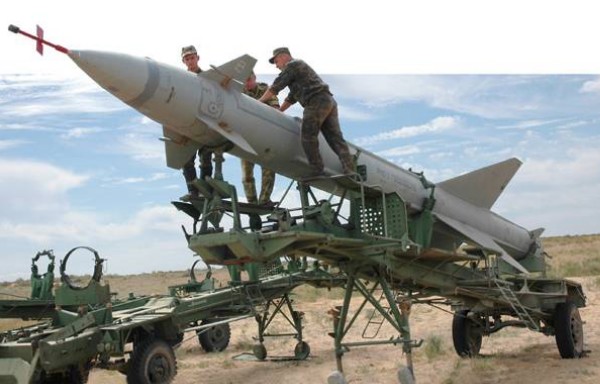
Like many of the first missile weapon system, System C-25, that NS. Khrushchev called "Moscow palisade", It had obvious disadvantages for another deployment stage. system funds were evenly distributed along the periphery of Moscow without increasing the most likely directions of attack (North and West). Insufficient density of the fire could not prevent the breakout of superior forces or defense can be breached even before the main forces bombers. Although the system has never been used in combat mode, no reason to believe, that C-25 was well protected from EW. While the US and UK aircraft had considerable combat experience with electronic warfare during the Second World War and in Korea, in the USSR they were in their infancy. This caused a weak protection C-25 system from electronic jamming and other methods EW. The choice of a fixed configuration combat positions limits the development of the system and its improvement. Huge command bunker, adapted for placement on their antenna system RAS B-200, limited opportunities azimuth station. C-25 system can hit targets subsonic, flying at a speed of up to 1000 kmh, although. bombers were armed with supersonic speed. finally, in the mid 50's missiles have been developed in the United States and the Soviet Union, run out of the kill zone defense: American AGM-28F «Hound Dog» and Soviet Kh-20 (AS-3 «Kangaroo»). They were a threat, since they had significantly less reflective surface and radar could run outside the C-25 system of the affected area. The disadvantages of high cost and the C-25 system caused the rejection of its deployment around Leningrad. C-25 system was in service almost 30 years, although its effectiveness has continued to fall. In the 80 years it has come to replace the S-300P.
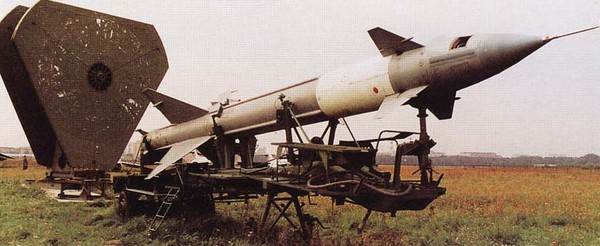
Performance characteristics of the S-25 "Golden Eagle" sample 1955 of the year
| speed goals | 1500 kmh |
| The height of the lesion | 0,5-20 km |
| Range | 35 km |
| Number of targeted goals | 20 |
| Number of SAM | 60 |
| Term storage of missiles | on the launcher - 0,5 of the year; In stock - 2,5 of the year |
The vertical antenna B-200 complex station C-25 “Berkut” prednaznachenadlya review of the airspace in the elevation plane.
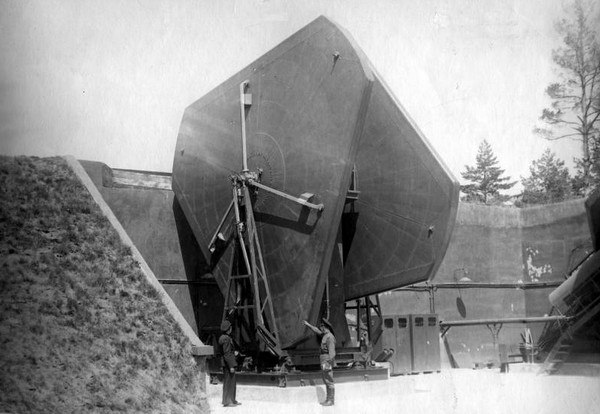
Control Room C-25 complex. In the center console Supervisor, on each side jobs and start targeting operators,
in the background air situation tablets.
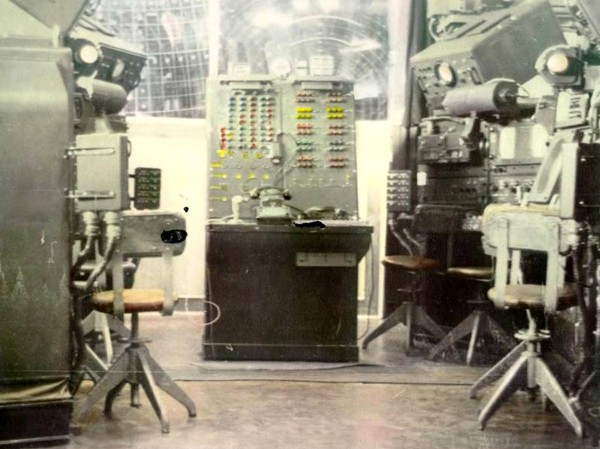
Target-based missiles 5YA24
